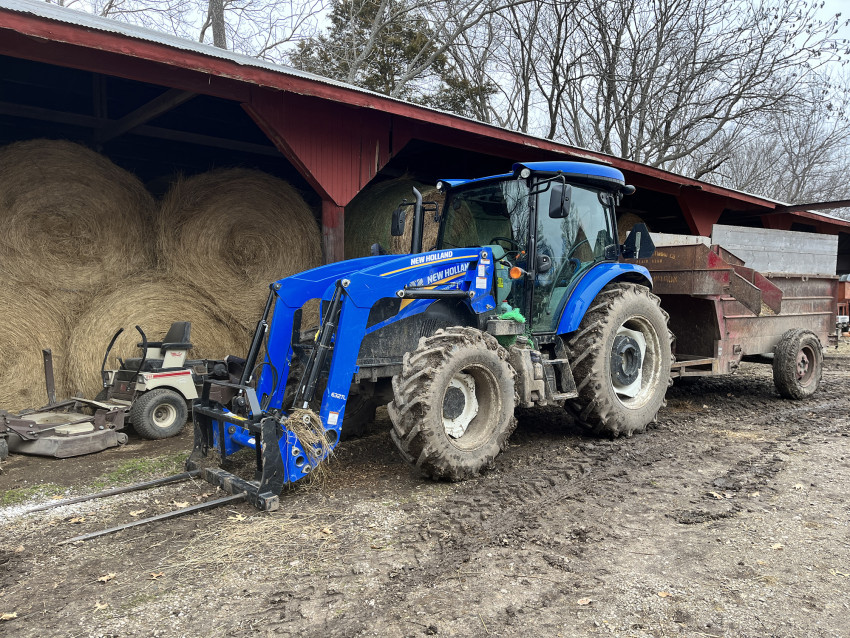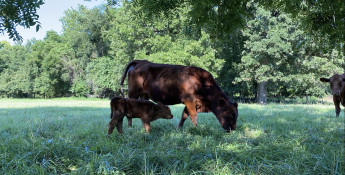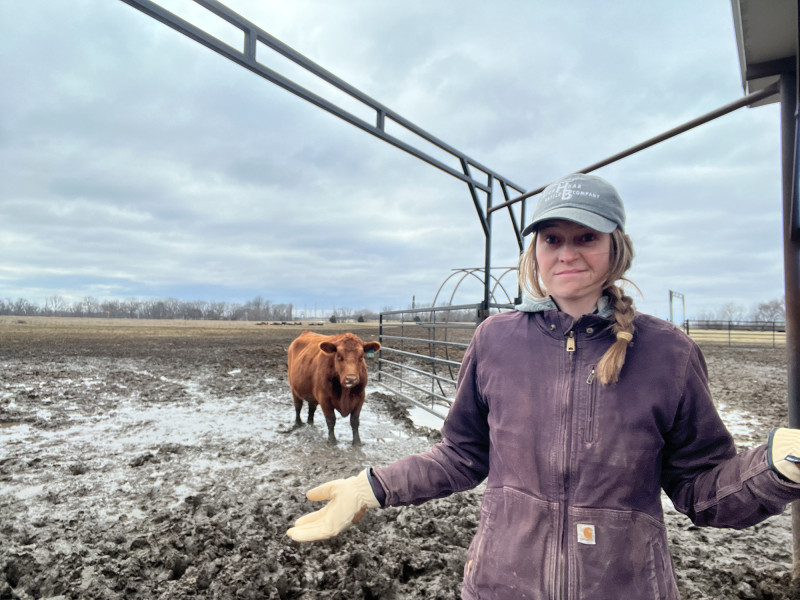By Brandi Buzzard on February 21, 2023
Old MacDonald’s Farm is Gone
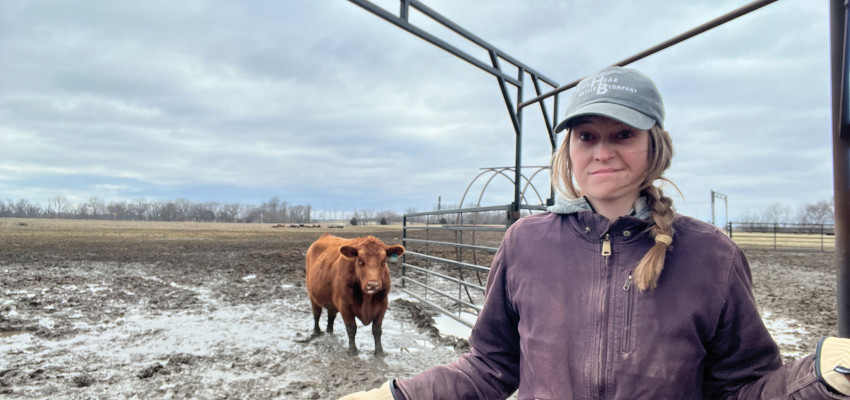
Close your eyes and picture this: a farmhouse and big red barn sitting atop a grassy, green hill. In front of the barn, in the farmyard, chickens peck the ground searching for insects and remnants of corn, children play with dogs and a farmer repairs a thresher. In the sprawling pastures surrounding the picturesque scene, cows nonchalantly graze and calves frolic.
What a beautiful image, right?
That diorama — often associated with Old MacDonald’s farm — is heartwarming and nostalgic, but that kind of farming has long been retired in this age of modern agriculture.
Threshers were phased out long ago in favor of combines to make farming more efficient. There are still innumerable flocks of free-range chickens on farms, but meeting the demand for eggs and other poultry products requires the adoption of modern practices. Farmers today raise chickens in temperature-controlled barns, free from predators and outside pests. And while the cows from Old Mac’s farm are still grazing today, the methods and science behind cattle nutrition have evolved to improve the health of both livestock and land.
And about those green pastures…
While it would be nice to have lush green grass all the time, the reality is from October through March, there is an awful lot of sloppy brown mud on our ranch. And while mud is hard on everything — people, animals and machinery — it’s a sign of always-needed moisture, so we don’t complain about mud. Muddy farms and ranches are not eye-appealing, and our ranch looks nothing like Old Mac’s farm during mud season, but it’s the truth. Farm and ranch life isn’t always pretty, but it’s always worthwhile.
Oh, and those little calves frolicking around?
Yes, they are cute but calving season isn’t always sunshine and rainbows. Some cows have issues delivering their calves, just like humans, and occasionally a medical professional has to step in to aid with delivery to keep all parties safe. Recently, one of our heifers was struggling to deliver her first-ever calf. She pushed on her own for quite a while to no avail so our herdsman put her in the barn and tried to help by pulling the calf in unison with her pushes. However, the calf would not exit the premises. Finally, our herdsman and I decided she needed to go to the vet where she received an emergency cesarean section to save both her life and the calf’s. Now, almost two weeks later, both cow and calf are doing well and have returned to the herd after a brief stay in a barn stall with supervision. The cow will likely be able to have a calf again next year, and she has a gnarly battle scar to show for her efforts.
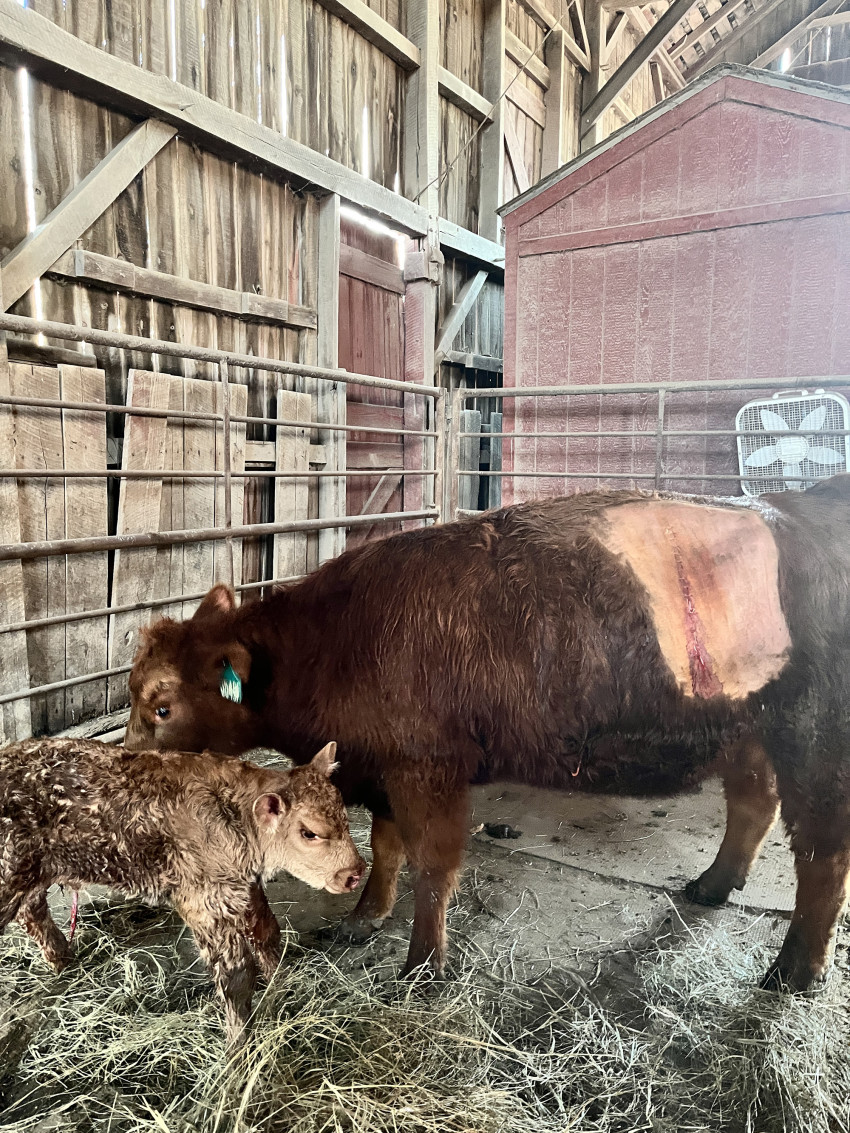 Again, this isn’t the classic imagery of raising cattle that has been perpetuated for decades, but it is the reality. And, as a rancher, I want to make sure you know the truth about how we are caring for animals in all seasons, preserving the land through the mud and doing our best to raise safe, nutritious food in modern-era agriculture.
Again, this isn’t the classic imagery of raising cattle that has been perpetuated for decades, but it is the reality. And, as a rancher, I want to make sure you know the truth about how we are caring for animals in all seasons, preserving the land through the mud and doing our best to raise safe, nutritious food in modern-era agriculture.

